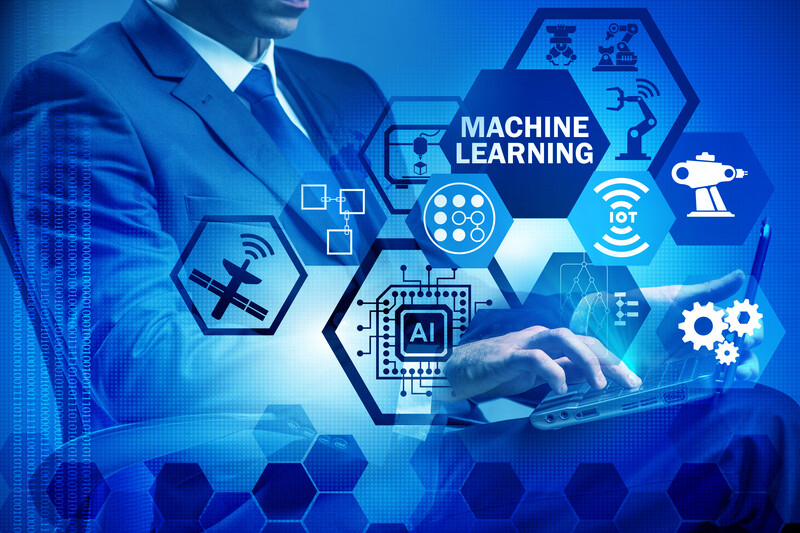With advancements in technology, there has been a significant change in functioning and processes in all industries. Artificial Intelligence, Machine Learning and Robotic Process Automation (RPA) are the new normal. However, machines may not achieve the required accuracy in output without human support. For instance, though many organizations are automating data entry and other manual, repetitive processes, human operators continue to provide the required support for data entry services.
Out of all industries, healthcare has been among the last ones to adopt automation. But today, healthcare is an evolving and growth-oriented sector due to the rise in the number of patients, and increased need for efficient and accurate back-office processes for healthcare providers.
The COIVD -19 pandemic has affected almost all industries and with the rising number of patients, healthcare organizations are required to embrace innovative solutions to provide better patient care and service. Several healthcare organizations are developing ventilator splitters, to use one ventilator for multiple patients, using 3D printers to create personal protective equipment (PPE) for front-line workers, and so on. At UiPath, a global software company, they are using RPA and automation to work with healthcare organizations in order to meet the pandemic demand surge.
- Minimizing patient wait times for COVID-19 testing: The Centers for Disease Control (CDC) in the United States is making arrangements to approve organizations like pharmacies to increase COVID-19 testing sites. The existing testing sites are already experiencing huge rush. At Cleveland Clinic drive up COVID testing site, a remote registration administrative (admin) worker validates whether the person being tested is a new or existing patient, then registers the patient into the EMR system. Later, the admin sends the patient-specific test label to one of the ten remote printers located on the front line of the testing site.
Undergoing all these procedures along with maintaining social distancing is leading to six-hour wait times in the drive-up testing lines. The reason for long wait times is the time-intensive manual process. To resolve this issue, Cleveland Clinic created and deployed a UiPath robot that checks whether the person is a new or existing Cleveland Clinic patient, registers them in the EMR system, and accurately selects the right remote printer to print each test label. With the automation of all these processes, healthcare professionals can complete the registration process in a few seconds.
- Automating test result reporting: Almost all hospitals face the problem of backlogs with a rising number of patients currently being tested for COVID-19. Labs are facing the problem of increased backlogs. This leads to complex administrative tasks at COVID-19 testing sites which take long hours to complete. At Mater Misericordiae University Hospital in Dublin, Ireland, COVID-19 test results should be logged into different systems and reported daily to the Infection Prevention and Control department. This system was introduced several years ago at the time of severe acute respiratory syndrome (SARS) 2003 outbreak. This is a complex process which involves the physicians to log into the blood test system, obtain disease codes, log into .NET platform using VPN and finally manually enter the test results in the platform. The whole process takes about three hours of input every day. So, to quicken the process, Mater Hospital used UiPath and RPA to automate COVID test results reporting. UiPath robots log into the hospital’s lobotomy system, apply the correct disease code, and input the test results. The robots save the hospital three hours of work each day and help healthcare professionals to focus more on providing better patient care.
- Analyzing COVID-19 related data from around the world: During these difficult times, collecting and analyzing COVID-19 related data from all over the world is a tedious task. But a specialized global healthcare agency is spending hours to gather all these data, centralize the information, and analyze the updates in real time with utmost accuracy. The agency has information coming in from more than 50 countries in various languages. This agency set up a data filtering system and used UiPath robots to process the information that came from various countries, including scraping data from five different systems and then centralized it into a single source. So, automation made the processing of data efficient and easy.
- Boosting recruitment of healthcare workers: The pandemic has led to a huge demand for healthcare workers. In the USA and UK, retired healthcare workers were asked to volunteer assistance during the needy hours. To meet the shortage of healthcare workers, states from Hawaii and New Hampshire are relaxing their licensing rules to allow out-of-state physicians and retired physicians to volunteer. But before these volunteers can join, some preliminary background checks like criminal background checks and credential verification have to be done. Processing all these data is a time-consuming activity. A government agency is using UiPath robots to run the background checks and upload data from applications into HR systems. Once the volunteer is ready, robots notify the relevant departments and make the recruitment process quick and easy.
- Helping procurement section to manage rising orders: It is very evident that the need for patient care is at its peak during this pandemic and hospitals are buying a large number of medical supplies to meet the demand. Procurement department in almost all hospitals are in charge of both purchasing and inventorying supplies, but the influx of medical supplies needing to be purchased is putting a strain on procurement. A hospital in Canada is dealing with medical supply volume similar issues, need for twenty times or more than their usual required medical needs. This has led to purchase backlogs and delays in delivering medical supplies throughout the hospital. So, the hospital used UiPath robots to balance orders and inventory in real time, which minimized the strain on the procurement staff and also helped meet the need for medical supplies on time.
Advantages of RPA Implementation in Healthcare Sector
- Automated Monitoring of Accounts Payable/Receivable: With careful monitoring of accounts payable and receivable, software robots can improve the billing efficiency and minimize write-offs. This makes accounts payable and receivable quicker and more effective, and thereby boosts the financial performance of healthcare providers.
- Better Appointment Turnout and Less Cancelled Appointments: Missed appointments result in huge financial losses for healthcare providers. But with the use of RPA to automate scheduling, sending appointment reminders to patients becomes easier. This allows doctors to maximize the number of patients they see each day and improve productivity and efficiency.
- Improvement in Patient Experience: A positive patient experience is essential for the success of healthcare businesses. By automating time-consuming and repetitive processes like appointment scheduling, data digitization, and inventory tracking, doctors will have more time to provide value-based care for their patients. This will minimize wait time for appointments and also enable patients to easily access their health records and bills online.
- Elimination of Human Error in Digitization of Patient Records: RPA software robots drastically minimize errors in data migration and copying tasks. The increased accuracy from the use of RPA will allow healthcare providers to maintain up-to-date and accurate medical records that are important when considering a patient’s medical information and history and also for providing better patient care.
Although RPA improves accuracy of reporting, compliance, productivity and minimizes cost, it still has some shortcomings. Although it claims to rectify human errors, it is not as good as humans at processing scanned images, and unstructured data. It mimics human behavior which is repetitive and doesn’t require knowledge, understanding, or insights. This can be dangerous in a healthcare setup because a minor error in data entry can lead to wrong medical decisions, or the same error can be repeated across multiple entries. This shows that assistance of human-assisted data entry services is vital alongside advanced technologies in order to eliminate errors and associated risks. Healthcare organizations are greatly dependent on various data, and RPA serves as a solution to manage and retrieve information efficiently.




